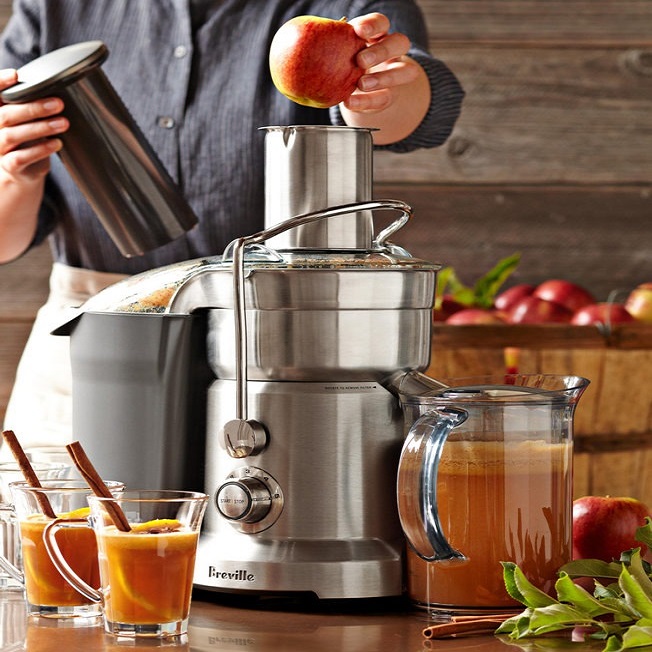
Introduction to Food Processors
How does a food processor work? A food processor is a versatile kitchen tool. Its main job is to help you chop, slice, and blend ingredients with speed. It can also mix doughs, grate cheese, and even make purées.
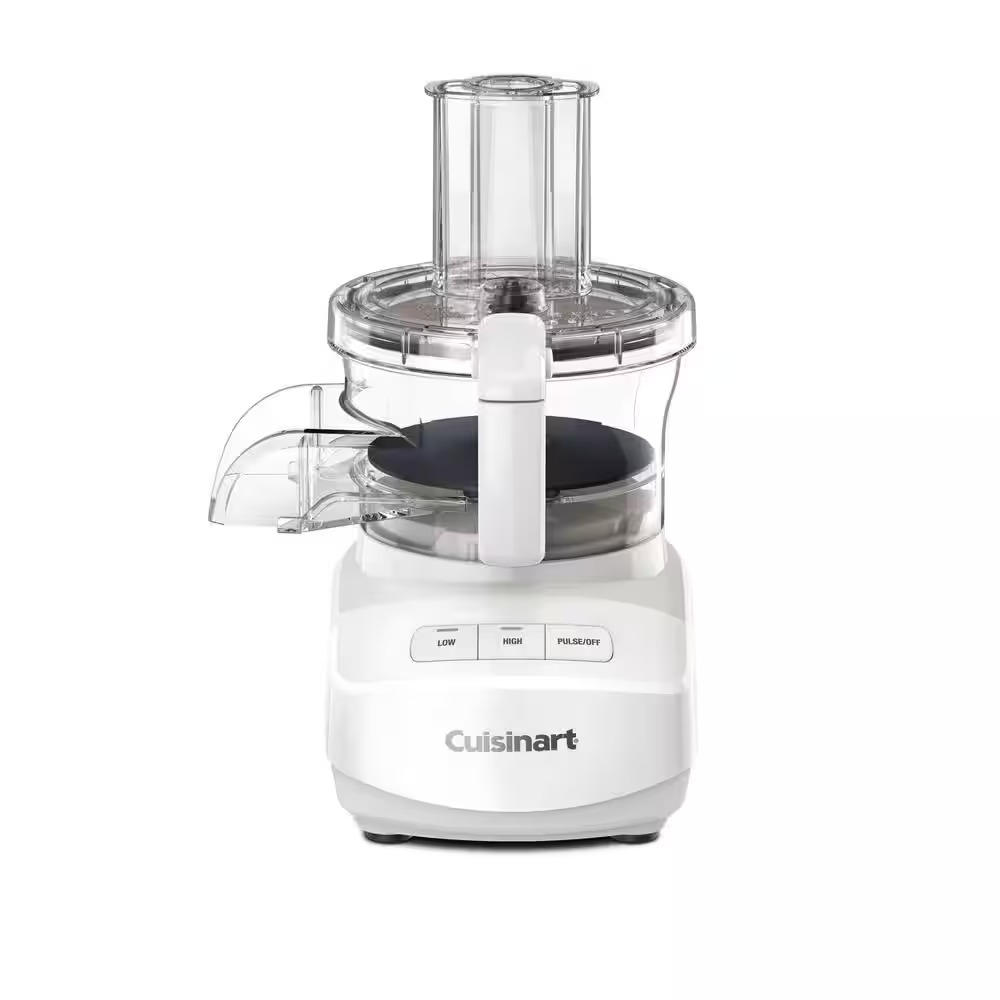
How Does a Food Processor Work?
How does a food processor work? Quite simply. It has a sturdy base that holds a motor. This motor powers a sharp blade inside a bowl. With the push of a button, the blade spins. It cuts through food placed in the bowl. Some food processors come with different blade attachments. These let you do more than just chop.
The bowl has a lid with a feed tube. You can add food while the processor is on. This adds convenience. For heavier tasks, like making dough, use special dough blades. They mix and knead with ease. A good food processor can also blend liquids. Think soups or sauces. But, they might not get them as smooth as a blender would.
Key Features of a Food Processor
How does a food processor work? Understanding the key features of your food processor is crucial. They determine its versatility and efficiency in the kitchen. Here’s an overview of those features that make all the difference.
The Motor and Base
The heart of any food processor lies in its motor and base. The motor powers the unit, driving the blades to perform. A sturdy and strong motor means better performance. The base provides stability. It ensures that the appliance stays still during operation. Always check the wattage. A higher wattage often means a more powerful motor.
The Bowl and Lid
The bowl of a food processor is where you place your ingredients. It should be made from durable material. Most are now shatterproof and dishwasher safe. Size varies, so pick one that fits your cooking needs. The lid secures on top, often featuring a feed tube. This allows you to safely add items while it’s running.
Blade Attachments and Their Uses
Blades are the workhorses of food processors. Standard blades chop, slice, and mince. They must be sharp and strong. Special attachments can increase functionality. Look for dough blades for mixing, or slicing discs for even cuts. Use the correct blade for the task to get the best results.
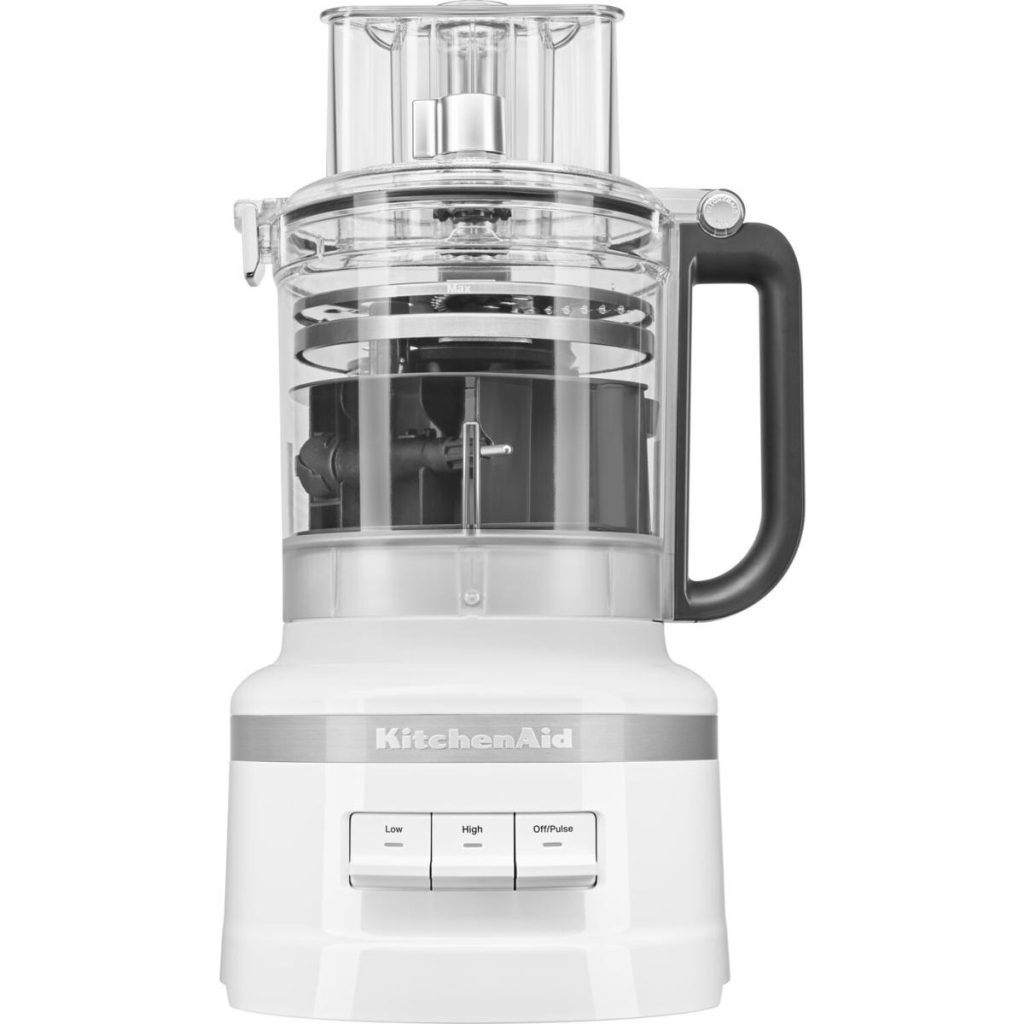
Selecting the Right Size and Capacity
Choosing the right size for your food processor depends on your needs. Think about how often and for how many people you cook. If you often prep meals for a big family, go for a larger model. For a small household, a compact size is better. Consider storage space too. A big food processor needs more room on your countertop or in the cupboard.
Standard Attachments Explained
Food processors usually come with a range of standard attachments. These include a chopping blade and slicing and grating discs. Use the chopping blade for dicing veggies or nuts. The slicing disc makes perfect slices for salads or casseroles. The grating disc is ideal for cheese or carrots. Each attachment is for specific tasks, making prep work faster.
Synthetic Functions and Attachments
Understanding the functions and attachments of your food processor is key to maximizing its potential in your kitchen.
Standard Attachments Explained
Most food processors come with several standard attachments. These usually include a chopping or mixing blade, and disks for slicing and grating. The chopping blade is perfect for dicing vegetables or mincing herbs. Slicing disks create uniform cuts for salads or cooking. Grating disks shred cheese and vegetables fast and evenly. These basic attachments streamline meal prep remarkably.
Advanced Attachment Options
Some food processors come with advanced options. You might find a dough blade for preparing breads and pastries. Fine slicing disks can help create thin cuts for dishes like a gratin. Julienne disks cut matchstick-sized pieces, great for stir-fry. Some models even offer attachments for making French fries, or citrus juicers for fresh juice. These enable you to extend your culinary skills and try new recipes with ease.
Practical Applications in the Kitchen
One of the most attractive benefits of a food processor is its ability to make kitchen tasks easier and quicker. From chopping to dough making, a food processor is a multi-talented helper. Below are various ways you can put it to good use.
Time-Saving Chopping, Slicing & Grating
The prowess of a food processor lies in its speedy and uniform cutting abilities. Here are just some of the tasks it can make lighter:
- Quickly chop onions, reducing tears and time spent.
- Slice vegetables evenly for salads and sides.
- Grate cheese or carrots in seconds, perfect for topping or mixing into dishes.
Using the appropriate blade, you can turn tedious chopping into a swift task.
Creating Soups and Purees
A food processor can blend ingredients for soups or purees but may not achieve the smoothness of a blender. Still, it’s excellent for:
- Combining cooked vegetables and broth for quick soups.
- Making baby food from steamed fruits and vegetables.
- Preparing bases for sauces and gravies.
Remember not to overfill the bowl, as this could affect the quality of the puree.
Homemade Condiments: Sauces and Dips
Fresh, homemade condiments are another area where food processors shine. You can easily whip up:
- Pesto, with a controlled chunky or smooth texture.
- Salsa, within minutes, tailored to your preferred spice level.
- Hummus and bean dips, perfect for healthy snacking.
These homemade options are healthier than store-bought, with less salt and no preservatives.
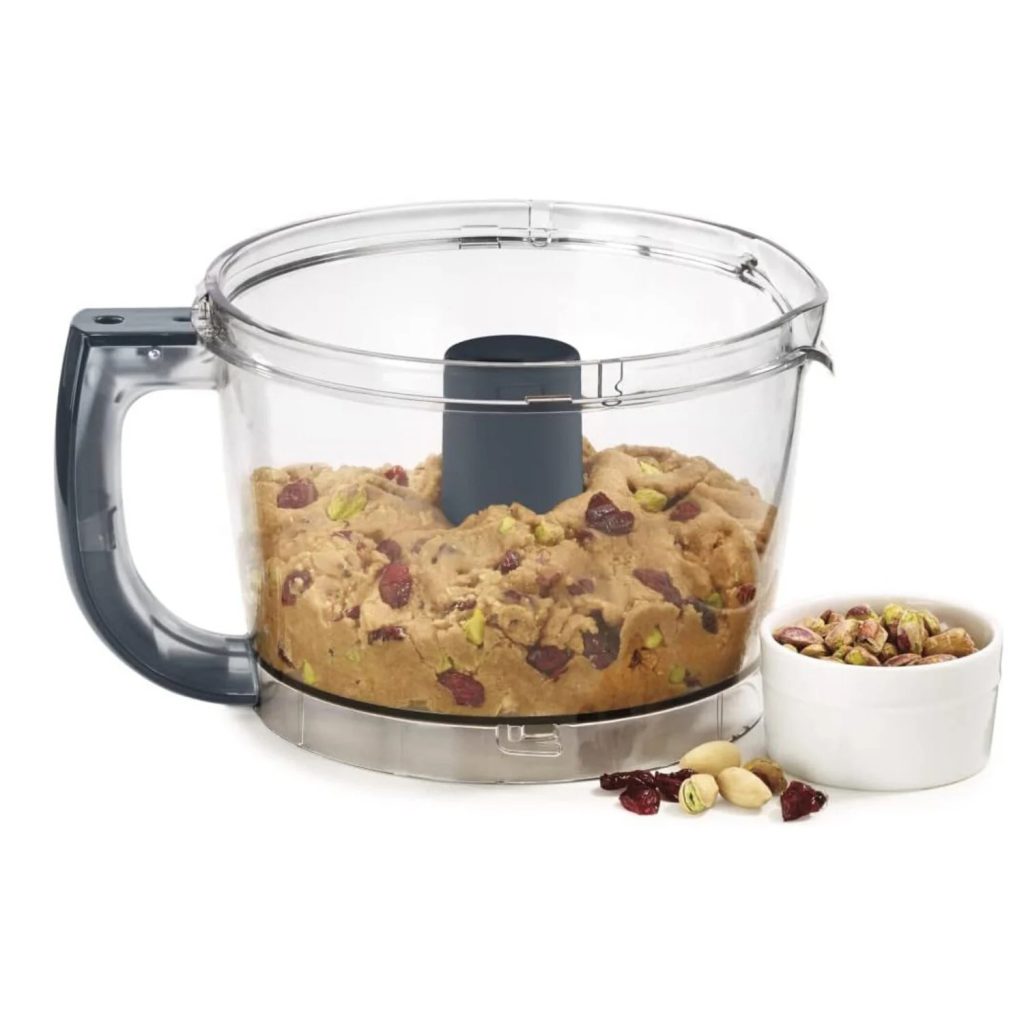
Safety Tips for Using Your Food Processor
When working with a food processor, safety is vital. Here are focused tips to keep you and your food processor in good shape:
Keep Your Fingers Safe
Never put fingers near the blades. Only use the pusher in the feed tube while it’s running.
Manage Power Carefully
Always plug in the processor after assembly. When finished, turn off and unplug first.
Maintenance and Cleaning Guidelines
Keeping your food processor in prime condition involves regular maintenance and careful cleaning. By adhering to these guidelines, you’ll extend its lifespan and ensure it’s always ready for use.
After Every Use
Clean your food processor immediately after each use. This prevents food particles from sticking and becoming harder to clean. Here are the steps:
- Disassemble the parts: Take apart the bowl, blades, and lid.
- Wash the removable parts: Most can go in the dishwasher. Check the manual to be sure.
- Wipe the base: Use a damp cloth on the motor base. Never submerge it in water.
Stubborn Food Residue
Encountering tough residue? Soak the affected parts in warm, soapy water. Then scrub gently with a cleaning brush.
Recipes and Inspirations Using a Food Processor
Having a food processor in your kitchen opens up a world of culinary possibilities. Whether it’s preparing ingredients for a recipe or making the dish itself, your food processor can take on various roles. Here are some recipes and ideas to inspire you to use your food processor to its full potential:
Quick and Tasty Appetizers
- Hummus: Blend chickpeas, tahini, lemon juice, and garlic for a smooth and creamy dip.
- Salsa: Pulse tomatoes, onions, cilantro, and peppers for a fresh and zesty side.
- Pesto: Combine basil, pine nuts, Parmesan, and olive oil for a flavorful sauce.
Wrap-Up: Making the Most out of Your Food Processor
To conclude, a food processor is a powerful kitchen ally. It cuts down prep time and assists with tasks from chopping to dough making. Remember these key takeaways:
- Use the right attachment for the task. This ensures speed and quality in your cooking efforts.
- Choose a size and model that fits your kitchen space and cooking habits.
- Keep safety in mind. Always use the food processor with its safety features intact.
- Clean and maintain your appliance to prolong its life and performance.
- Get creative with recipes. Your food processor can handle a lot more than just slicing and dicing.
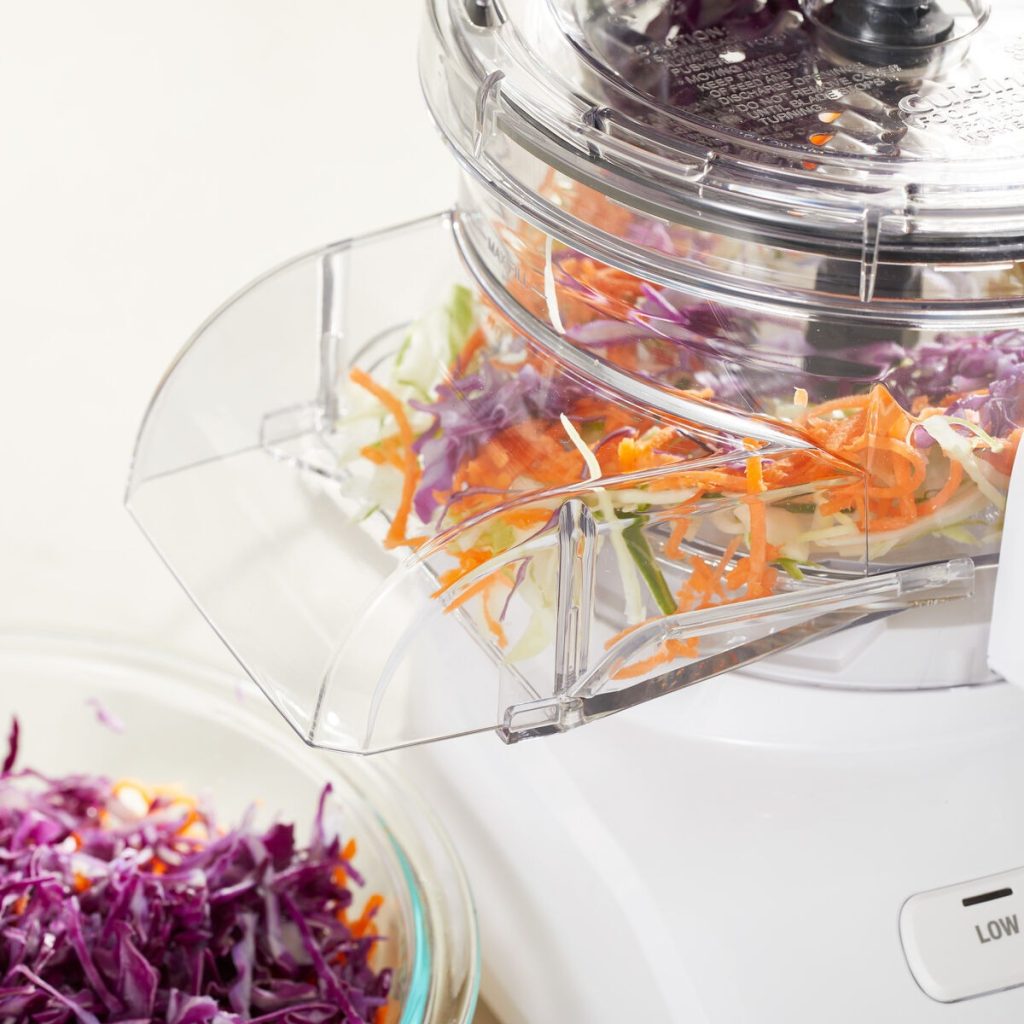
How does a food processor work? By understanding how a food processor works, you can harness its full potential. It’s not just about speeding up the prep work; it’s also about expanding your culinary repertoire with ease. So, embrace your food processor. Let it inspire new dishes and help you master your craft in the kitchen.





